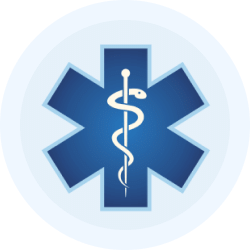BMAT Exam > BMAT Videos > Crash Course for BMAT > Food Chains & Predator Prey Cycles
Food Chains & Predator Prey Cycles Video Lecture | Crash Course for BMAT
FAQs on Food Chains & Predator Prey Cycles Video Lecture - Crash Course for BMAT
| 1. What is a food chain? |  |
A food chain is a series of organisms in which each organism is eaten by the next organism in the chain. It represents the flow of energy and nutrients from one organism to another.
| 2. What is the difference between a food chain and a food web? |  |
A food chain is a linear representation of the flow of energy and nutrients in an ecosystem, showing the relationship between a single predator and its prey. On the other hand, a food web is a more complex representation that shows the interconnections between multiple food chains in an ecosystem. It includes multiple predators and prey, and illustrates the various feeding relationships and energy transfers within the ecosystem.
| 3. How do predator-prey cycles affect the population sizes of both species? |  |
Predator-prey cycles refer to the fluctuations in population sizes of predators and prey over time. When the prey population increases, there is more food available for the predators, leading to an increase in the predator population. As the predator population grows, they consume more prey, causing a decline in the prey population. With fewer prey available, the predator population decreases as well. This downward trend in predator numbers allows the prey population to recover, leading to another cycle.
| 4. What are the factors that influence predator-prey cycles? |  |
Several factors can influence predator-prey cycles, such as availability of food, reproductive rates, predation efficiency, and environmental conditions. For example, if there is an abundant food supply, both predator and prey populations are likely to increase. However, if the predator population becomes too large, it may deplete the prey population, leading to a decline in both populations. Additionally, changes in environmental conditions, such as the availability of shelter or resources, can also impact predator-prey dynamics.
| 5. How can human activities disrupt food chains and predator-prey cycles? |  |
Human activities can disrupt food chains and predator-prey cycles through habitat destruction, pollution, and overexploitation. When habitats are destroyed or modified, the availability of food and shelter for both predators and prey can be negatively affected. Pollution, such as chemical runoff or oil spills, can harm the organisms in a food chain, disrupting the balance of predator and prey populations. Overexploitation, such as overfishing or hunting, can lead to the depletion of prey species, causing disruptions in predator-prey relationships.
Related Searches














